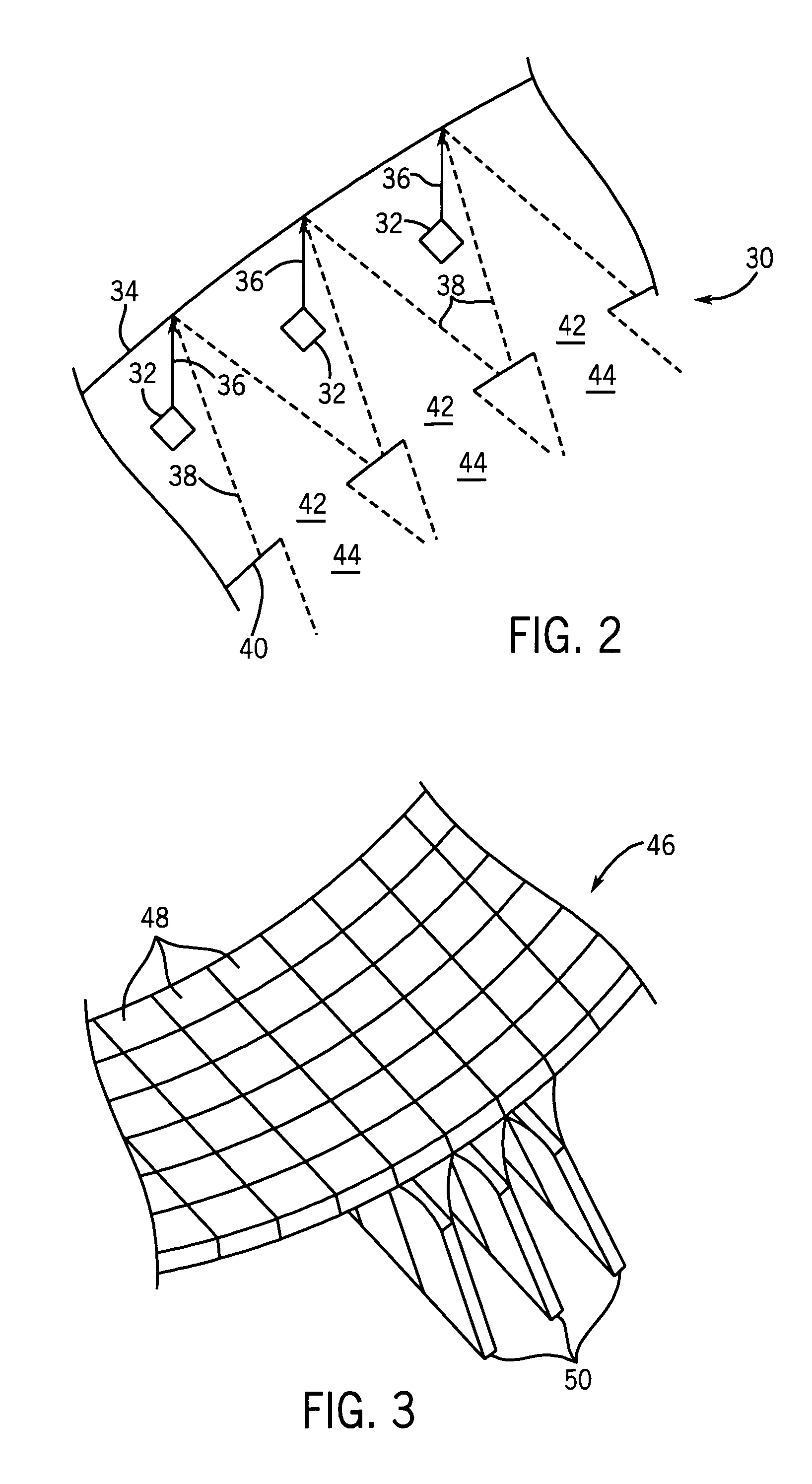Rotational computed tomography system and method
a computed tomography and rotational technology, applied in tomography, instruments, nuclear engineering, etc., can solve the problems of significant heating of all elements, inability to meet the requirements of the system, so as to reduce the rotation load of the conventional ct system, maintain or improve the quantity and quality of the measurement data.
- Summary
- Abstract
- Description
- Claims
- Application Information
AI Technical Summary
Benefits of technology
Problems solved by technology
Method used
Image
Examples
Embodiment Construction
[0019] Turning now to the drawings, referring first to FIG. 1, a computed tomography (CT) system is illustrated and designated generally by reference numeral 10. The CT system 10 comprises a scanner 12 formed of a support structure and internally containing one or more stationary or rotational, distributed sources of X-ray radiation (not shown in FIG. 1) and one or more stationary or rotational digital detectors (not shown in FIG. 1), as described in greater detail below. The scanner is configured to receive a table 14 or other support for a patient, or, more generally, a subject to be scanned. The table can be moved through an aperture in the scanner to appropriately position the subject in an imaging volume or plane scanned during imaging sequences.
[0020] The system further includes a radiation source controller 16, a table controller 18 and a data acquisition controller 20, which may all function under the direction of a system controller 22. The radiation source controller 16 r...
PUM
| Property | Measurement | Unit |
|---|---|---|
| volume | aaaaa | aaaaa |
| speed | aaaaa | aaaaa |
| Computed tomography | aaaaa | aaaaa |
Abstract
Description
Claims
Application Information
 Login to View More
Login to View More - R&D
- Intellectual Property
- Life Sciences
- Materials
- Tech Scout
- Unparalleled Data Quality
- Higher Quality Content
- 60% Fewer Hallucinations
Browse by: Latest US Patents, China's latest patents, Technical Efficacy Thesaurus, Application Domain, Technology Topic, Popular Technical Reports.
© 2025 PatSnap. All rights reserved.Legal|Privacy policy|Modern Slavery Act Transparency Statement|Sitemap|About US| Contact US: help@patsnap.com



